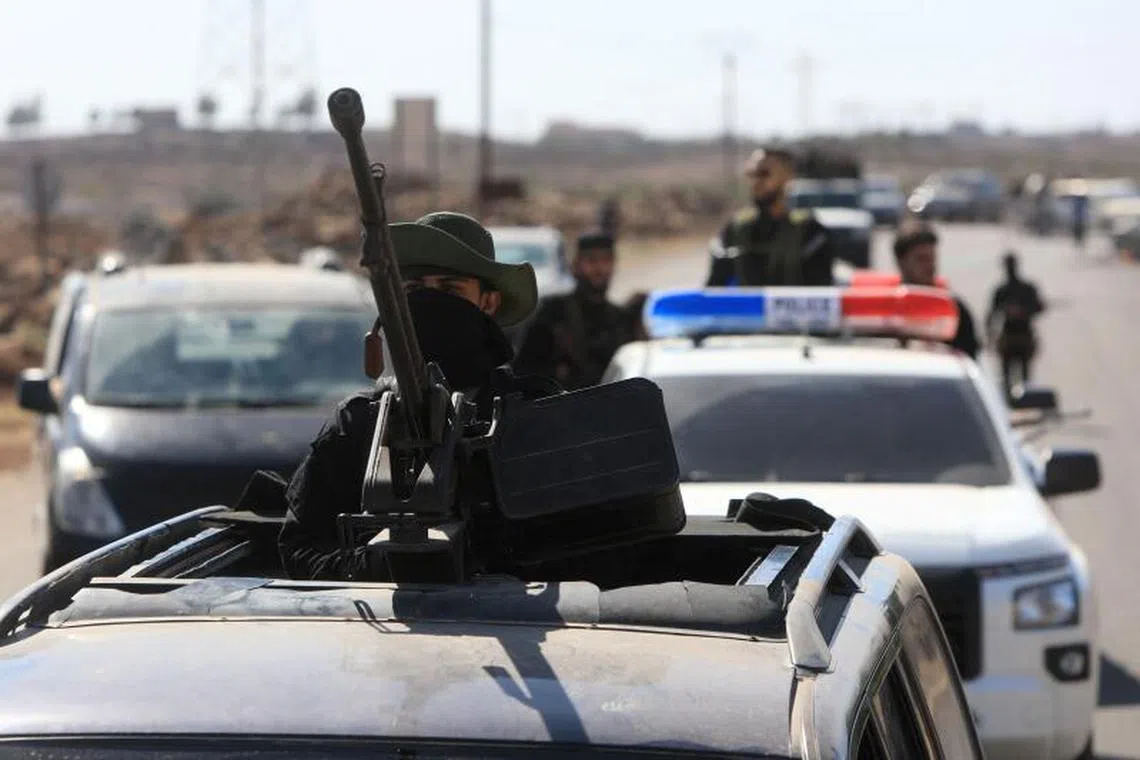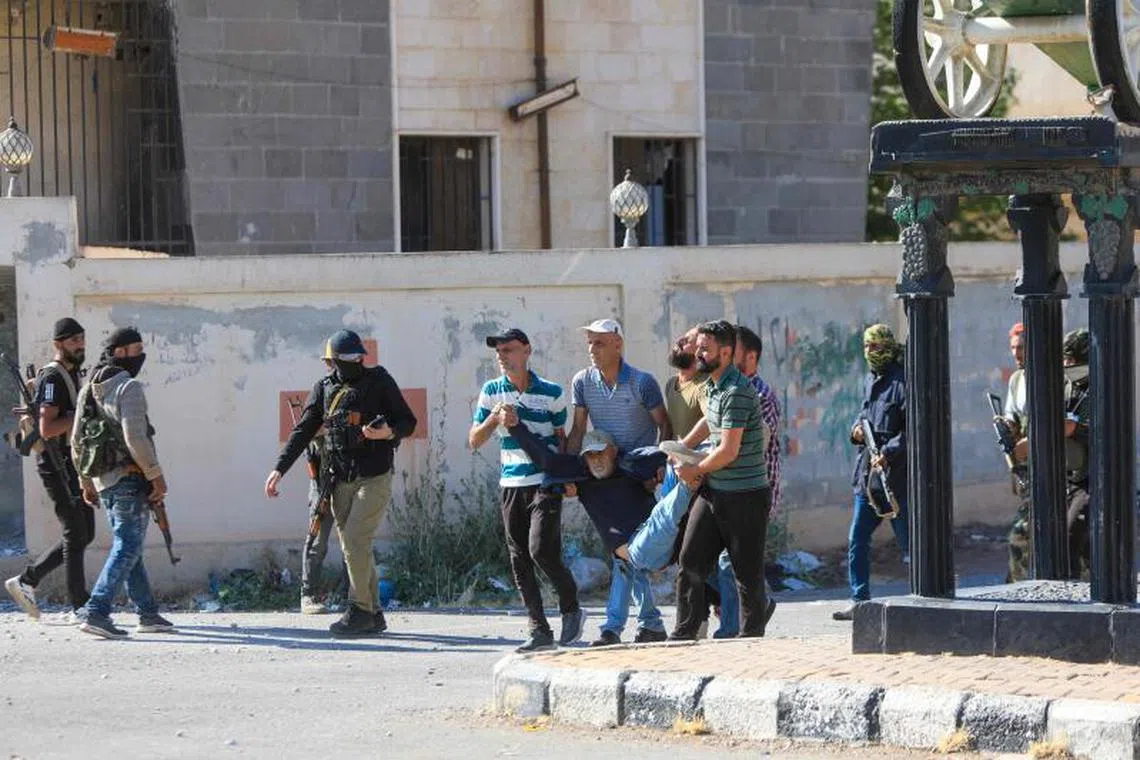Syria sectarian clashes leave nearly 100 dead; Israel strikes targets to protect Druze
Sign up now: Get ST's newsletters delivered to your inbox

Syrian security forces near Sweida, a predominantly Druze city, on July 14.
PHOTO: AFP
Follow topic:
DAMASCUS – Syrian government forces were advancing towards the southern city of Sweida on July 14 to quell deadly clashes between Druze fighters and Bedouin tribes, with one Druze armed group saying talks with the authorities aimed at brokering a truce were under way.
The Syrian Observatory for Human Rights war monitor reported 99 people killed since the fighting erupted on July 13 – 60 Druze, including four civilians; 18 Bedouin fighters; 14 security personnel and seven unidentified people in military uniforms.
As the violence escalated, Israel – which has previously warned it would intervene in Syria to protect the Druze
An AFP correspondent saw Syrian forces on July 14 take control of the Druze village of Al-Mazraa, where Bedouin fighters were also located.
Commander Ezzeddine al-Shamayer told AFP that the forces were heading towards Sweida city.
In a statement, the Interior Ministry declared that “army and internal security forces have moved closer to the centre” of Sweida province.
Mr Bassem Fakhr, spokesman for the Men of Dignity movement, one of the largest Druze factions in Sweida, told AFP that talks were “under way between the notables of the city of Sweida and representatives of the general security (forces) and the Defence Ministry to reach a solution”.
The Druze religious authorities had called on the evening of July 14 for a ceasefire in the area, saying they were not opposed to the Syrian central government.
But Sheikh Hikmat al-Hijri, one of the three Druze spiritual leaders in Sweida, expressed his “rejection of the entry” of general security forces into the province, demanding “international protection”.
Israel – which also has a Druze population, and has previously attacked Syria in purported defence of the group – reported hitting several tanks heading towards Sweida on July 14.
The strikes were “a clear warning to the Syrian regime – we will not allow harm to be done to the Druze in Syria”, Defence Minister Israel Katz posted on X.
Fear of massacres
The fighting in the south underscores the challenges facing interim leader Ahmad al-Sharaa, whose Islamist forces ousted president Bashar al-Assad in December after nearly 14 years of civil war.
Syria’s pre-war Druze population was estimated at around 700,000, many of them concentrated in Sweida province.
The Druze, followers of an esoteric religion that split from Shi’ite Islam, are mainly found in Syria, Lebanon and Israel.
Following deadly clashes with government forces in April and May, local and religious leaders reached an agreement with Damascus under which Druze fighters have been providing security in the province since May.
The streets of Sweida were deserted on July 14, with an AFP photographer reporting gunfire during funerals.
“We lived in a state of extreme terror – the shells were falling randomly,” said Mr Abu Taym, a 51-year-old father in Sweida.
“Traffic on the streets is paralysed, and most shops are closed.”

People carrying a man wounded during clashes between Bedouin tribes and Druze fighters in an area between Mazraa and Walga near the Syrian city of Sweida on July 14.
PHOTO: AFP
“We fear a repeat of the coastal scenario,” said 46-year-old Amal, referring to the March massacres of over 1,700 mostly Alawite civilians on Syria’s coast. Groups affiliated with the government were blamed for most of the killings.
“We are not against the state, but we are against surrendering our weapons without a state that treats everyone the same,” she added, noting that she and her family escaped from Sweida to a nearby village.
In a post on X, Syrian Defence Minister Murhaf Abu Qasra urged his troops to “protect your fellow citizens” from “outlaw gangs” and “restore stability to Sweida”.
‘Lack of state institutions’
The violence began on July 13 when Bedouin gunmen abducted a Druze vegetable vendor on the highway to Damascus, prompting retaliatory kidnappings.
Though hostages were later released, the fighting carried on the next day outside Sweida city, with mortar fire hitting villages and dozens wounded, according to the Suwayda 24 news outlet.
In a post on July 13 on X, Interior Minister Anas Khattab said “the lack of state, military and security institutions is a major reason” for the ongoing tensions in Sweida.
The Syrian Observatory for Human Rights said members of Bedouin tribes, who are Sunni Muslims, had sided with security forces during earlier confrontations.
Bedouin and Druze factions have a longstanding feud in Sweida, and violence occasionally erupts between the two sides.
The wave of massacres in March targeting the Alawite community and the subsequent attacks on Druze areas, as well as a deadly attack on a Damascus church

